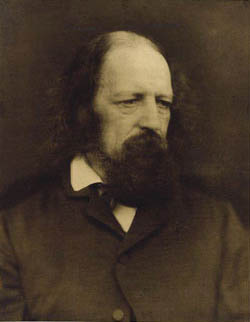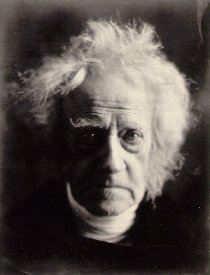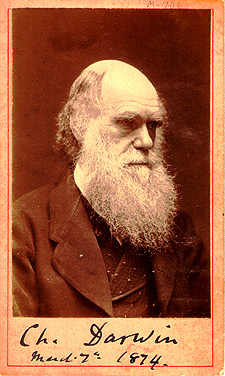Nothing in Julia Margaret Cameron’s family background, class, or personal circumstances serves to explain why at the age of 48, presented with a camera as a gift from her two daughters, she embraced photography with an avidity that bordered on obsession. Born in Calcutta to a well-to-do British family, she was educated in France and England and in 1838 married the jurist Charles Hay Cameron. They settled in Sri Lanka (Ceylon), where in addition to working on the legal code of that country, Charles Cameron acquired a number of coffee plantations. In 1848 the Camerons returned to England and established themselves in the Isle of Wight.
Julia Margaret Cameron’s Working Practices
From the moment of her camera acquisition, Cameron was an indefatigable photographer. Her subject matter consisted exclusively of portraits and fancy-dress tableaux (e.g., quintessentially Victorian photographs made to illustrate Alfred Lord Tennyson’s Idylls of the King). Working with the wet collodion process, she had her garden greenhouse converted to a darkroom and studio, and in the next ten years she made a steady stream of images. Friends, family, servants, and even passersby were conscripted as models by Cameron. Inasmuch as the Cameron milieu included many of the great figures of Victorian arts, letters, and science, our sense of the faces (and to a certain extent the personalities) of notables such as Sir John Herschel, Thomas Carlyle, Charles Darwin, and Lord Tennyson has often been determined by Cameron’s representations of them.
Julia Margaret Cameron’s Obscurity and Rediscovery
In 1875 the Camerons returned to Sri Lanka, where, except for a few photographs of local subjects, Cameron abandoned photography. Cameron’s photographs passed largely into obscurity until they were enthusiastically rediscovered by Alfred Stieglitz and the Photo Secessionists. Her images were strongly influenced by the English Pre-Raphaelite painters, and nowhere more so than in her costume pieces illustrating religious, literary, poetic, and mythological themes. Although equally romantic in conception, it is principally her portraits that have entered the canon of art photography. Unique among contemporary portrait production, Cameron’s photographs are notable for the extreme intimacy and psychological intensity of effect achieved by the use of extreme close-up, suppression of detail (sometimes accompanied by peripheral blurring), and dramatic lighting. The Pictorialist-Like effect of Cameron’s work in fact was remarkably close in appearance and sensibility to much of the photography championed in Stieglitz’s Camera Work. This certainly was a crucial factor in her rediscovery at the beginning of the 20th c. Her attempts, and success, at psychological penetration – conveying the inner spirit, in her terms – are recognized today as being decades ahead of their time.
Examples ofJulia Margaret Cameron’s Work
Slide 1: Cameron Tennyson

Slide 2: Cameron Herschel
Slide 3: Cameron Darwin
Slide 4: Cameron Adriana(image not found)
Slide 5: Cameron Pomona
As a child, Alice Liddell (1852 – 1934), was frequently photographed by Lewis Carroll (Charles Dodgson). She is the young ‘Alice’ for whom he wrote his books Alice in Wonderland and Through the Looking Glass. Cameron photographed Alice when she was in her early twenties as Alethea, in this profile study. We have not discovered any historical personifications of Alethea in the visual arts, but in ancient Greek the word invokes honesty and sincerity. At the same sitting, Cameron made another similar frontal study of Alice titled Pomona.


